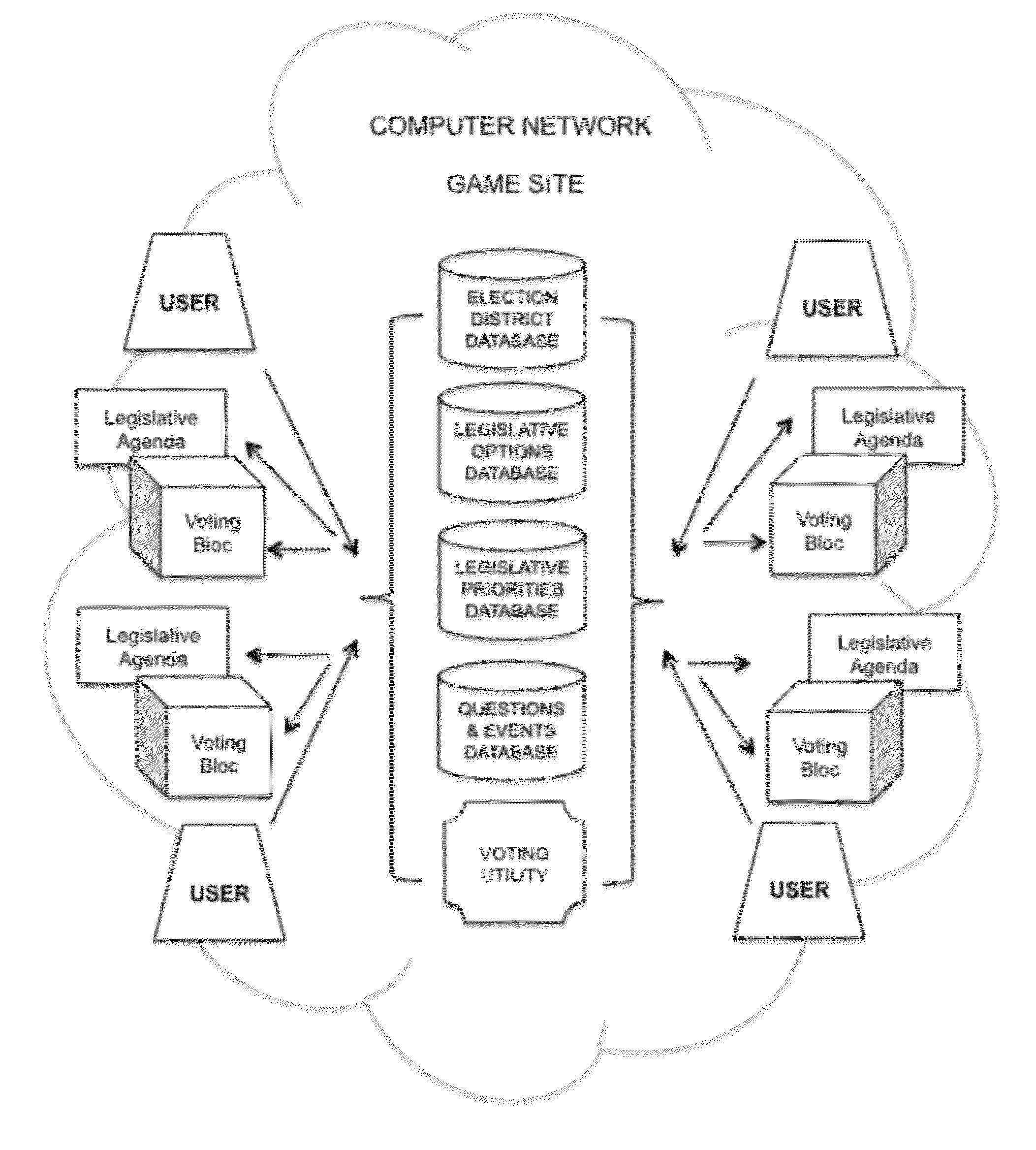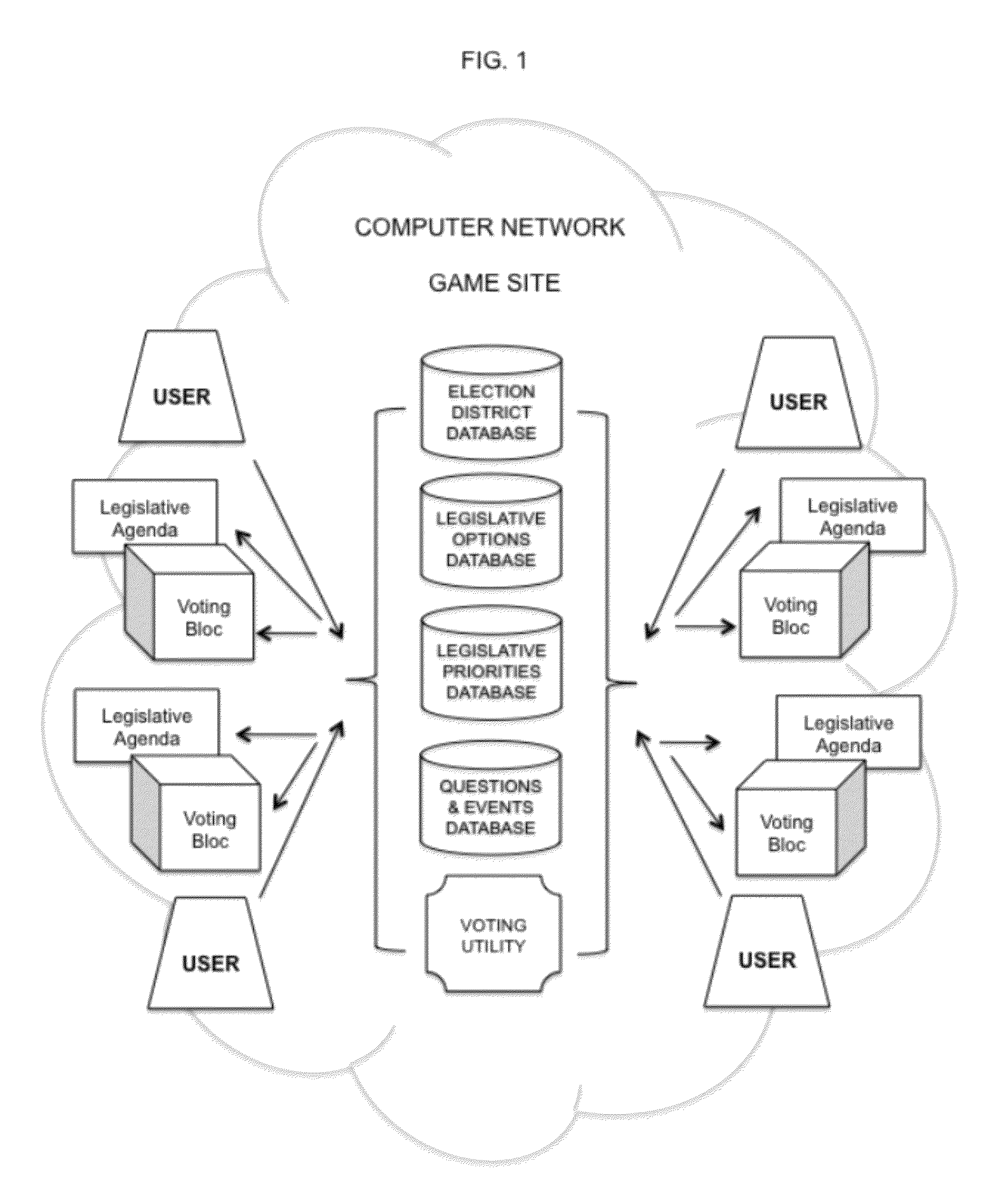System for playing an interactive voter choice game
- Summary
- Abstract
- Description
- Claims
- Application Information
AI Technical Summary
Benefits of technology
Problems solved by technology
Method used
Image
Examples
Embodiment Construction
[0031]Studies show trends toward decreasing voter turnout in most established democracies since the 1960s, accompanied by decreasing voter confidence that their votes in elections make a difference and that elected officials respect the will of their constituents. This invention is designed to help citizens increase their influence over elections and their outcomes by providing voters an amusing multiparty game for learning how to run and elect their own candidates to enact voters' legislative agendas by using core features of the inventor's recently patented Interactive Voter Choice System (U.S. Pat. No. 7,953,628) to set common legislative agendas and build voting blocs and electoral coalitions.
[0032]Efforts to increase civic engagement largely focus on reforming existing laws that tend to favor incumbents over challengers. Computer- and web-based initiatives to increase engagement largely focus on enhancing voters' organizing capabilities to master the intricacies of traditional ...
PUM
 Login to View More
Login to View More Abstract
Description
Claims
Application Information
 Login to View More
Login to View More - R&D
- Intellectual Property
- Life Sciences
- Materials
- Tech Scout
- Unparalleled Data Quality
- Higher Quality Content
- 60% Fewer Hallucinations
Browse by: Latest US Patents, China's latest patents, Technical Efficacy Thesaurus, Application Domain, Technology Topic, Popular Technical Reports.
© 2025 PatSnap. All rights reserved.Legal|Privacy policy|Modern Slavery Act Transparency Statement|Sitemap|About US| Contact US: help@patsnap.com



